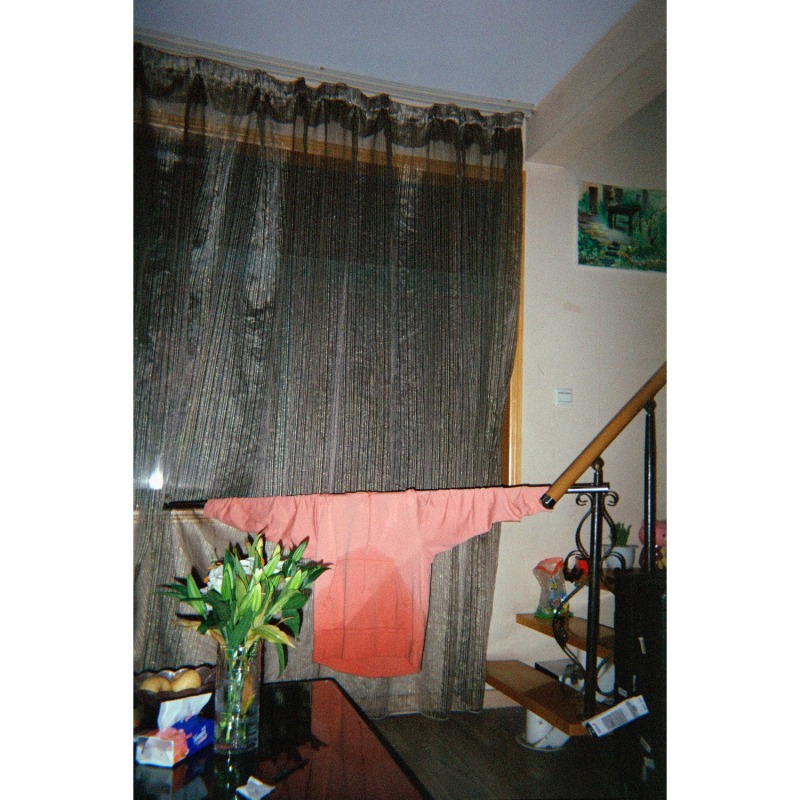Preface
Text/Xiao Ruiyun
Ruotong Guan’s photography explores the fluctuating emotions in familial connections, using family space as an intermediate. The exhibition starts with a series of light leaking films, creating a poetic and dreamlike environment. As Bachelard discussed in The Poetics of Space: our home, in particular, reflects the imagery of intimacy, solitude, and passion; we subjectively construct our home while being spiritually constructed by it.
The narrative of this exhibition opens with a scene from an ordinary day at dusk, where the light separates the space into two parts, signifying the distance between Ruotong and her mother. This distance enables Ruotong to deeply examine the state and culture of the familial situations. The title Nectarine Blossom & Honey, is the name of a perfume that her mother always wears. Her work portrays the complexity of a mother's life as a woman, just as the fragrance diffuses into multiple layers of sensation that are simultaneously tender, passionate, and profound. By photographing her mother both in the house and in the factory that her mother owns, Ruotong’s work reveals the complication of female identities. On the one hand, the role of a mother presents the diversity of the family structure, on the other hand, it also demonstrates the intensity and busyness of being a female factory owner.
In Ruotong’s work, her mother’s “traces” in the house become the presence of her mother. Ruotong uses photography to investigate the interaction between memory and personal perception through the depiction of numerous exquisitely detailed scenes and objects, such as her waiting for her mother through a curtain made of beads, carelessly hanged clothes, and dying flowers in the living room, etc. These traces not only represent the physical landscape of the family reality but also the emotions and memories accompanied by it. The exhibition's factory portion focuses on the mother and daughter's emotional bond. Ruotong gradually abandons the daughter's viewpoint as she develops this series when she gets to learn more about her mother's profession and to examine another woman's life experience from a different female point of view. She uses her work to reflect on how female business owners navigate through a male-dominated industrial environment. The presence of men is indicated by the large machines which the female figure is passing through. Additionally, Ruotong's works visually convey the state of balance and the strength of the woman at work through various spatial compositions and object combinations.
In the exhibition, images of the home and the factory alternate, replicating the mother's absence in one location and her presence in another. The works of Ruotong begin with personal experiences and then move on to examine gender issues in both familial and societal contexts. They draw attention to the fact that in society women are often considered inconsequential, and treated unjustly, while women's energy is frequently disregarded in public. Thus, in addition to capturing her mother with her camera, Ruotong hopes to inspire the audience to discover the female subjectivity through her works.
Note: The Poetics of Space is written by French philosopher Bachelard. He bases his study of architectural space on phenomenology, arguing that space is not a container to hold things, but rather the home of human consciousness.
